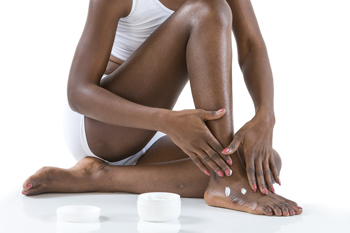 If you experience any level of pain on the outside of your foot, it is possible that you may have injured your cuboid bone. You may begin to notice an uncomfortable sensation when you try to bear weight on the outer edge of the foot or your toes may become weak. The condition that is known as cuboid syndrome may be a result of this particular bone in the foot becoming torn or damaged. There may be several symptoms associated with this ailment including swelling and redness surrounding the affected area, loss of strength in the ankle, or extreme tenderness on the side of the foot. One of the main causes of cuboid syndrome are sprains that are incurred to the ankle. This can happen as a result of falling, repeated strain from frequent jumping or running, or from an activity such as misjudging a step off a curb. If you feel you have injured this portion of your foot, it is suggested to speak with a podiatrist for a diagnosis and treatment technique that is correct for you.
If you experience any level of pain on the outside of your foot, it is possible that you may have injured your cuboid bone. You may begin to notice an uncomfortable sensation when you try to bear weight on the outer edge of the foot or your toes may become weak. The condition that is known as cuboid syndrome may be a result of this particular bone in the foot becoming torn or damaged. There may be several symptoms associated with this ailment including swelling and redness surrounding the affected area, loss of strength in the ankle, or extreme tenderness on the side of the foot. One of the main causes of cuboid syndrome are sprains that are incurred to the ankle. This can happen as a result of falling, repeated strain from frequent jumping or running, or from an activity such as misjudging a step off a curb. If you feel you have injured this portion of your foot, it is suggested to speak with a podiatrist for a diagnosis and treatment technique that is correct for you.
Cuboid syndrome, also known as cuboid subluxation, occurs when the joints and ligaments near the cuboid bone in the foot become torn. If you have cuboid syndrome, consult with one of our podiatrists from Jill Einhorn, DPM and James Einhorn, DPM. Our doctors will assess your condition and provide you with quality foot and ankle treatment.
Cuboid syndrome is a common cause of lateral foot pain, which is pain on the outside of the foot. The condition may happen suddenly due to an ankle sprain, or it may develop slowly overtime from repetitive tension through the bone and surrounding structures.
Causes
The most common causes of cuboid syndrome include:
Symptoms
A common symptom of cuboid syndrome is pain along the outside of the foot which can be felt in the ankle and toes. This pain may create walking difficulties and may cause those with the condition to walk with a limp.
Diagnosis
Diagnosis of cuboid syndrome is often difficult, and it is often misdiagnosed. X-rays, MRIs and CT scans often fail to properly show the cuboid subluxation. Although there isn’t a specific test used to diagnose cuboid syndrome, your podiatrist will usually check if pain is felt while pressing firmly on the cuboid bone of your foot.
Treatment
Just as the range of causes varies widely, so do treatments. Some more common treatments are ice therapy, rest, exercise, taping, and orthotics.
If you have any questions, please feel free to contact our offices located in Brooklyn and Astoria, NY . We offer the newest diagnostic and treatment technologies for all your foot care needs.
Read more about Cuboid Syndrome